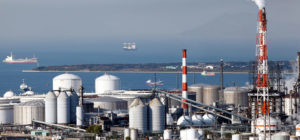
Energy efficiency and ways to reduce emissions from buildings may be the cheapest way to lower carbon footprints and help reach climate goals, but the current pace of investments in energy efficiency is insufficient for a net-zero pathway.
Now investors in energy efficiency, including companies and funds, are pushing for government policies targeting more efficient energy use, as they see a lack of action would be a missed opportunity to boost energy efficiency, the Financial Times’ Harry Dempsey notes.
The missed opportunity in energy efficiency would be like “$20 bills littering the sidewalk and nobody [picking] them up,” Katie McGinty, Vice President & Chief Sustainability, Government and Regulatory Affairs Officer at energy efficiency and buildings technology company Johnson Controls, told the FT.
The building sector accounts for 38 percent of all energy-related carbon dioxide emissions when adding building construction industry emissions, the UN said last year.
“Emissions from the operation of buildings hit their highest-ever level in 2019, moving the sector further away from fulfilling its huge potential to slow climate change and contribute significantly to the goals of the Paris Agreement,” the UN Environment Programme noted in November 2020.
The International Energy Agency (IEA) said in a report last month that “Total annual investment in energy efficiency worldwide needs to triple by 2030 to be consistent with a path towards reaching net zero emissions by 2050, as set out in the IEA’s Roadmap to Net Zero by 2050.”
“We consider energy efficiency to be the ‘first fuel’ as it still represents the cleanest and, in most cases, the cheapest way to meet our energy needs. There is no plausible pathway to net zero emissions without using our energy resources much more efficiently,” said IEA Executive Director Fatih Birol.
Government policies are expected to help energy efficiency investment rise by 10 percent to nearly $300 billion in 2021, the IEA’s report found.
“Increasing the share of existing buildings that are zero carbon ready from less than 1% today to around 20% by 2030 is a key milestone, as is moving to no new sales of coal and oil boilers globally from 2025,” according to the IEA’s Net Zero Emissions by 2050 Scenario.




